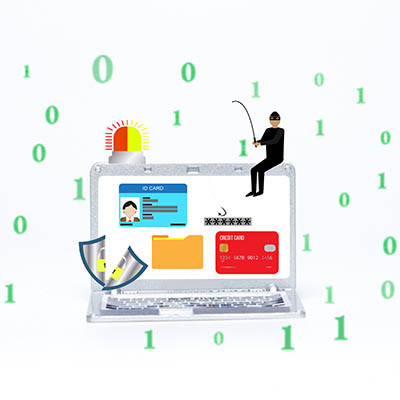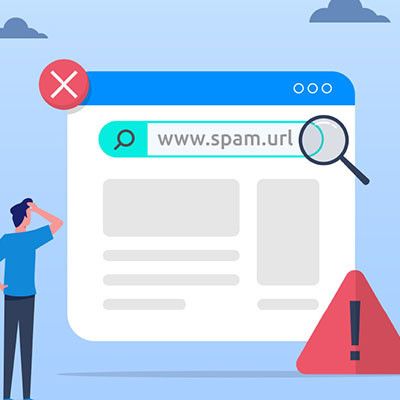Scams are everywhere, and it’s up to you and your team to identify them before you accidentally expose your business to something truly sinister. However, it’s often easier said than done, and scammers have gotten craftier in recent years. Today, we want to discuss three of the dead giveaways that you’re looking at a phishing scam, as well as how to address it.
TS3 Technologies Blog
Nowadays, we’re all busy—especially at work. Collectively, our days are filled with improving our products and services, cultivating client relationships, and putting out fires left and right. Do you really have the mental bandwidth to commit to quibbling over whether or not your data is secure?
The fact of the matter is that cyberattacks of all kinds are a constant threat to everyone, and could very well take your business out of commission unless you do something about it. Let’s review some steps that will help reinforce your business’ security posture and better defend your data.
You’ve probably heard of phishing attacks, but if not, the best way to explain it is with the legend of the Trojan horse. In ancient times, the city of Troy fell when a raiding party, hidden within the belly of a constructed wooden horse, was allowed past the gates. The lesson: deception is the most powerful weapon one can employ, and cybercriminals will use it against your business.
Most small businesses have trouble navigating cybersecurity, and that’s because there are too many threats to count. You might even feel like you're a little over your head yourself. Today, we’re bringing to you four of the biggest threats to watch out for on the Internet, as well as what you can do to keep them from impacting your operations.
The methods criminals use to access money and sensitive information have evolved dramatically. That official-looking email requesting an urgent payment, or a sudden system lockdown demanding a ransom; these are no longer rare occurrences but calculated tactics by modern cyber thieves.
Cybertheft isn't a one-size-fits-all problem; it's sophisticated, and the types of techniques are designed to exploit vulnerabilities and deceive unsuspecting individuals and businesses. Let’s explore some of the primary ways these digital adversaries operate.
Potential data breaches are increasingly problematic for organizations, and the most common way that data is stolen is through phishing attacks. Phishing attacks are currently one of the most pervasive threats on the Internet, and you need to understand them to thwart their effectiveness against your users. Let’s explore what exactly a phishing attack consists of and some best practices you can use to defend your network against them.
Phishing is a pervasive threat nowadays, with businesses of any size or industry serving as prime targets. Understanding phishing and implementing effective prevention strategies is crucial for your entire team.
Let's explore how to reduce the effectiveness of phishing schemes against your business—in other words, how to prevent phishing from having an impact.
We often advise people to steer clear of clicking on suspicious links, but distinguishing between a legitimate URL and a dubious one has become increasingly challenging. Not only have malicious tactics evolved to the point where everyone has to stay on top of their game to not be fooled, these threats are almost pervasive so they are coming at people from all types of directions. We thought we would focus on a single punctuation mark that can make all the difference in whether a link is legitimately safe or potentially dangerous.
Cybercriminals fight dirty, whether it’s attacking small businesses, large enterprises, or individuals who just want to watch Netflix. It doesn’t matter who you are or what you do for the community; you’ll always be a target for hacking attacks. To save time and effort, hackers will use low-tech attacks and social engineering attacks to target individuals. Hackers aren’t developing new threats all the time; if anything, they largely use existing exploits, purchasable software, and social engineering to take advantage of people.
Passwords are one of the most important parts of keeping any account secure, and if you were to gain access to these accounts, you’d have access to personal data, subscriptions, money, and even the victim’s identity. Today, we want to show you just how easy it is to steal a password and gain access to an account.
There is no denying that Quick Response codes—better known as QR codes—are a handy little invention. Just a few years ago, many businesses heavily adopted these contactless communication tools, allowing customers with a smartphone to access menus, documents, and more with ease. Having said that, we unfortunately can’t deny that cybercriminals are taking advantage of how handy QR codes are, too.
Phishing is a common issue that businesses of all kinds can experience, whether they are a small startup or a large corporation. Hackers are always trying to extol information from your employees, including account credentials, remote access to your systems, and in some cases, funds directly from a bank account. It’s up to you to teach them how to identify and respond to phishing attacks.
Phishing is a remarkably dangerous tactic used by hackers to take advantage of those who might not be quite as in-the-know about security practices. Phishing attacks can be carried out against both businesses and individuals alike, and due to the many different forms these attacks can take—including email, text message, and even fraudulent websites—they can be quite problematic.
It doesn’t take much to get us to start ranting about the dangers of phishing, and it’s a topic that we won’t stop talking about for some time. Unfortunately, phishing comes in enough forms that it isn’t always so simple to spot. For this week’s tip, we just wanted to run through the different formats phishing can take, focusing on how to identify each type.
It’s the holiday season, and you know what that means: lots of gift-giving and online shopping. Regardless of what you and your family celebrate this holiday season, you should be prepared to handle the influx of phishing attacks which always surface around this time every year, including both the usual methods and the more sophisticated ones.























